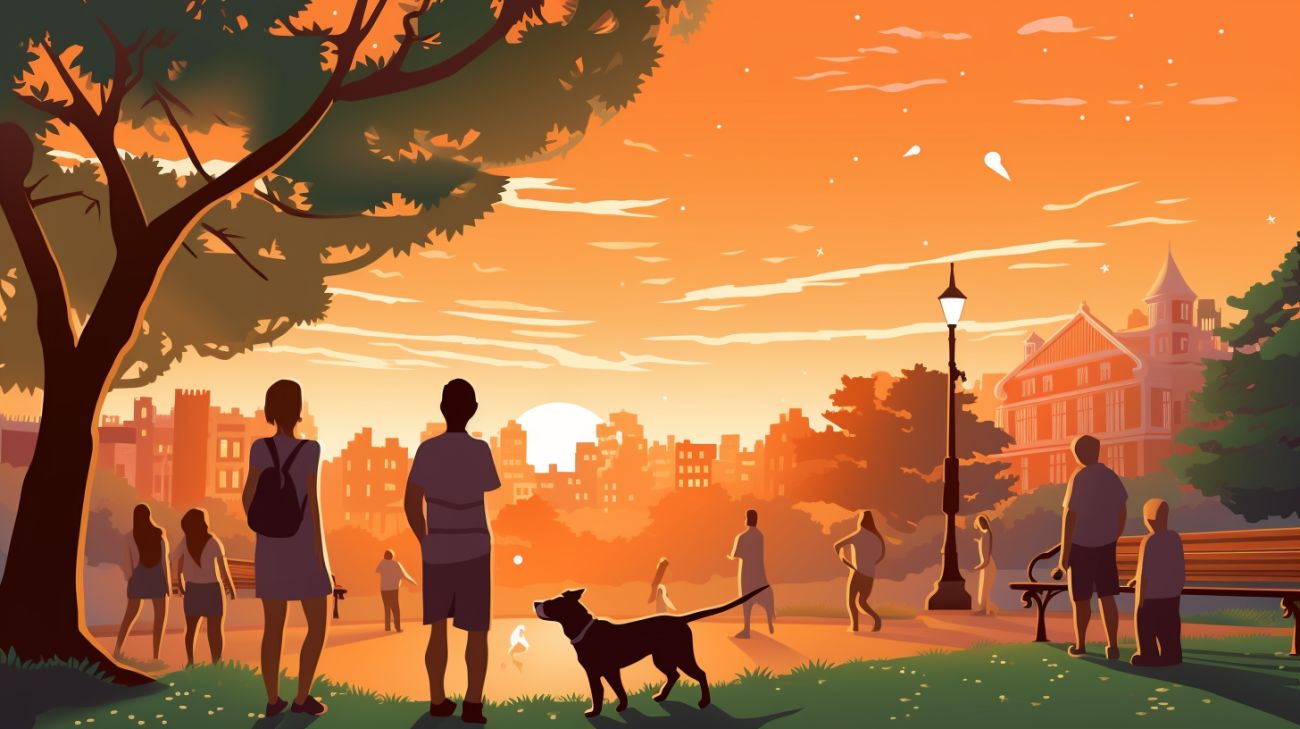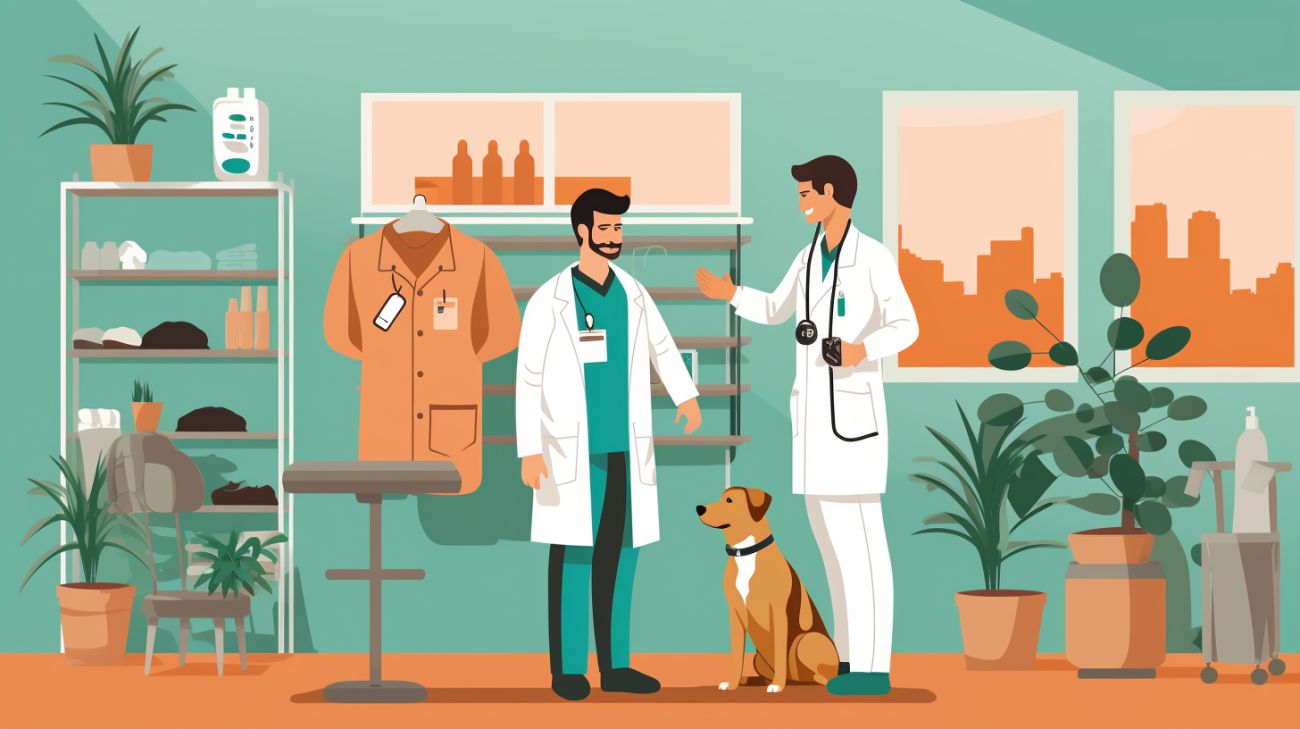Key takeaways
When you find a lost dog, it's tricky to know what to do. While the dog may need medical attention and care, you need to keep yourself safe.
We're exploring the three steps you should take when you find a lost dog, which include assessing the situation, reporting them, and checking the PetRadar website.
We'll also detail where you should take them to get the care they need once you have determined the situation is safe.
Quick Navigation
What to do with a lost dog: 3 steps
1. Assess the situation
Stray or pet? Identify whether the pup is a stray dog or a lost pet. You can do this by looking at the condition of their coat, whether they are well groomed or not, and whether they are wearing a collar. If their coat is dull, dirty, and unkept, then it's likely they’re a stray. Similarly, if they have visible fleas or unclipped nails, this is also an indicator that they are stray. Identifying a pet should be fairly easy. Check for any identification tags and collars and whether they are clean and well-kept.
Dangerous or safe? Even if you believe they are a pet, they can still be dangerous. Lost pets can be in survival mode, which means they'll avoid any contact with other people and animals and can be more aggressive or skittish than usual. Check the dog's body language and see how comfortable they are around you. Even if strays are friendly, they can sometimes carry diseases, which means you shouldn't approach or pet them.
Every dog is different, and it's important you understand their behavior before you approach them.

2. Report them
Dog warden: Many neighborhoods and cities will have a dedicated dog warden who are responsible for monitoring dogs, both lost pets and strays, in the area. They'll know whether the dog you've found is a known stray or not and they'll be able to advise on your next steps and provide helpful resources.
Animal shelter: Reporting the found dog to the nearest animal shelter can help reunite them with their owner if they are a lost pet. It's likely their owner has reported them missing to the local shelter, so if your description matches, the shelter will often advise you to bring them in or if it's not safe to do so, they will come and pick them up.
Animal control: When you find a lost dog, contacting the local animal control office can be extremely useful. They will often attend to any reports of a lost animal that's been found and help transport them to a safer environment, like a rescue organization or a shelter.

Check PetRadar
Where to take a lost dog
Veterinarian
Scan for a microchip: Checking to see if the pup is chipped will be a clear indicator of whether they are a pet or not. The chip will hold all the details of the owner so the vet will be able to contact them straight away.
Test for diseases: If a dog spends a prolonged period of time outdoors, it can be easy to pick up diseases from other strays and other animals. The vet will be able to test whether the dog has any dangerous illnesses.
Give them nourishment: It's likely the dog is malnourished if they have lived on the street for a while. The vet will be able to give them a drip to properly hydrate and special food that's high in fat and nutrients.
Tend to cuts, infections, and injuries: Any small injuries can be disinfected and treated there and then to prevent further infection or their condition worsening.

Local animal shelter
Many animal shelters are overrun and underfunded, so while they are a great option for the pup, try to take them to a vet first.

FAQs
Where is the best place to take a lost dog?
The best place to take a lost dog is an animal shelter or animal rescue center. They'll be able to scan the dog for a microchip, give them the care they need, and process them for adoption.
How do you deal with a lost dog?
If you've lost your dog, you should report them missing straight away. While it can be a difficult process, being proactive and thinking logically will help you get them back home safely.
What to do if you've lost a dog?
If you lost your dog, you should report them missing, spread the message around your neighborhood, and physically search for them. Starting a PetRadar search will alert over 4,000 of your neighbors so more people are aware of your missing pet.
Can dogs find their way back home?
Yes, many dogs will be able to find their way back home because of their natural homing abilities. Their sense of smell, hearing, and sensitivity to the Earth's electromagnetic field means they can understand their location and navigate their way around.
What to do if you find a lost dog?
If you find a lost dog, you should call animal control for advice. If you can, you should take them to a local animal shelter or a veterinarian so they can get the care they need.
Who do I phone if I find a dog?
If you find a lost dog, be sure to phone local animal control facilities for advice. You should also call local animal shelters and veterinarians to see if they have the space and resources to take care of the dog.



